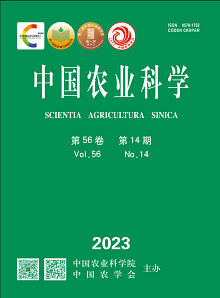【Objective】Phosphorus is a non-renewable resource, and the uptake and utilization efficiency of soil phosphorus by plants is low. It is of great economic and ecological value to improve the efficiency of phosphorus absorption and utilization by grafting. The aim of this study was to screen the varieties of grafting tomato rootstocks with efficient use of phosphorus and to establish a light, simple and efficient evaluation technology system, which had theoretical and practical guiding effects on the breeding, demonstration and promotion of new rootstocks with efficient use of phosphorus.【Method】The scion tomato varieties of Qinglove No.1 were grafted on 25 rootstocks (G1-G25) or self-grafted (G0). The experiment was conducted in tomato seedling stage and whole growth stage. In the seedling stage test, the grafted seedlings were treated with normal phosphorus (Hoagland nutrient solution, NP) and low phosphorus (Hoagland nutrient solution with 10% phosphorus content, LP) by hydroponics. 15 days later, 16 indexes were measured, including growth and development, phosphorus absorption and utilization efficiency of grafted seedlings. In the whole growth period experiment, the grafted seedlings were still used as the test material. The phosphorus application level of the control group was set at 1 272 kg∙hm-2, and that of the LP treatment group was 50% of that of the control group. Nine indexes such as fresh weight of stem and leaf, yield and fruit quality were determined. Then, the correlation analysis, principal component analysis, membership function value analysis, cluster analysis, multiple regression analysis and other mathematical analysis models were used to screen the test materials with phosphorus efficient utilization type grafting tomato rootstock and to evaluate them comprehensively.【Result】The average coefficient of variation of indexes at seedling stage and whole growth stage under NP treatment was 9.74% and 2.85%, respectively, and the average coefficient of variation of indexes at seedling stage and whole growth stage under LP treatment was 16.10% and 5.84%, respectively. The variation coefficient of each index under LP treatment was generally higher than that under NP treatment, indicating that the difference of influence of rootstock genotype on grafted tomato was amplified under LP condition. Correlation analysis showed that yield (I-17) under NP condition was positively correlated with stem and leaf dry weight (I-1), stem diameter (I-5), stem and leaf P mass fraction (I-7), stem and leaf P absorption efficiency (I-9), whole plant P absorption efficiency (I-11), and stem and leaf P transport efficiency (I-12); under the LP condition, the tomato yield (I-17) was positively correlated with stem and leaf dry weight (I-1), root dry weight (I-2), stem diameter (I-5), strong seedling index (I-6), stem and leaf P mass fraction (I-7), stem and leaf P absorption efficiency (I-9), root and leaf P absorption efficiency (I-10), whole plant P absorption efficiency (I-11), and stem and leaf P transport efficiency (I-12). The ranking of principal component and membership function values showed that the ranking rules of the two analysis methods were basically consistent, and both of them were consistent with the performance pattern of cluster analysis. However, there were slight differences in the ranking of individual rootstock varieties, so this paper used the comprehensive average performance of the two rankings as the final ranking, and calculated the top five grafting combinations (G24, G1, G8, G3, and G25). Through multiple regression analysis, the seedling stage evaluation indexes suitable for low phosphorus tolerance of tomato rootstock were obtained, and the regression equations of key seedling stage indexes affecting yield and quality were established: YI-17=1354.630-5.552XI-4, YI-20=2.956XI-5-7.949XI-14+2.927, and YI-23=48.807+0.005XI-11.【Conclusion】In this study, a set of simple, objective and relatively objective technology system for screening and comprehensive evaluation of tomato rootstock with efficient utilization of phosphorus was established. Three rootstocks, including Korean rootstock No. 1, Jinpeng Rootstock No. 1 and Western Tomato rootstock, were identified to have comprehensive advantages of efficient utilization of phosphorus fertilizer.









